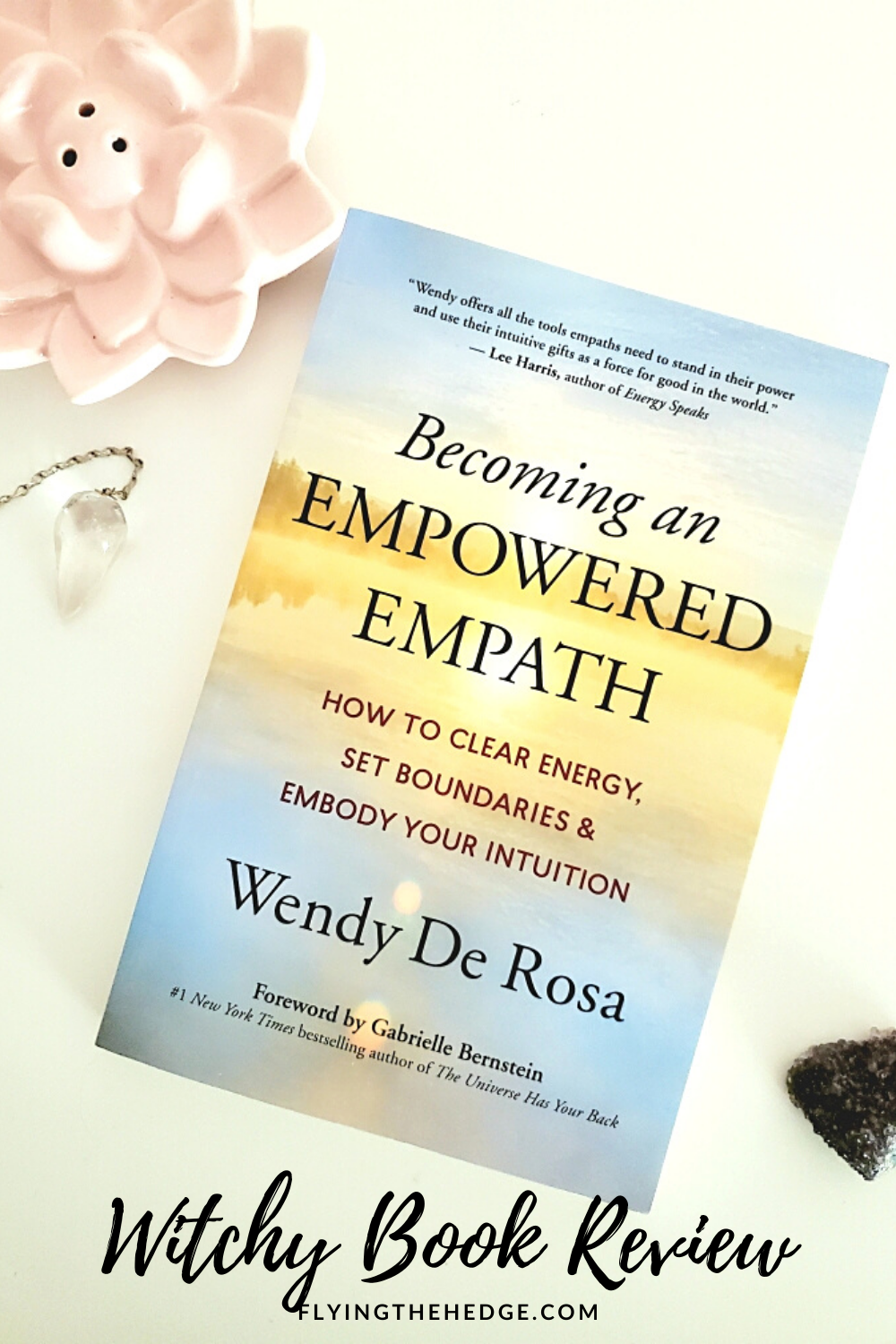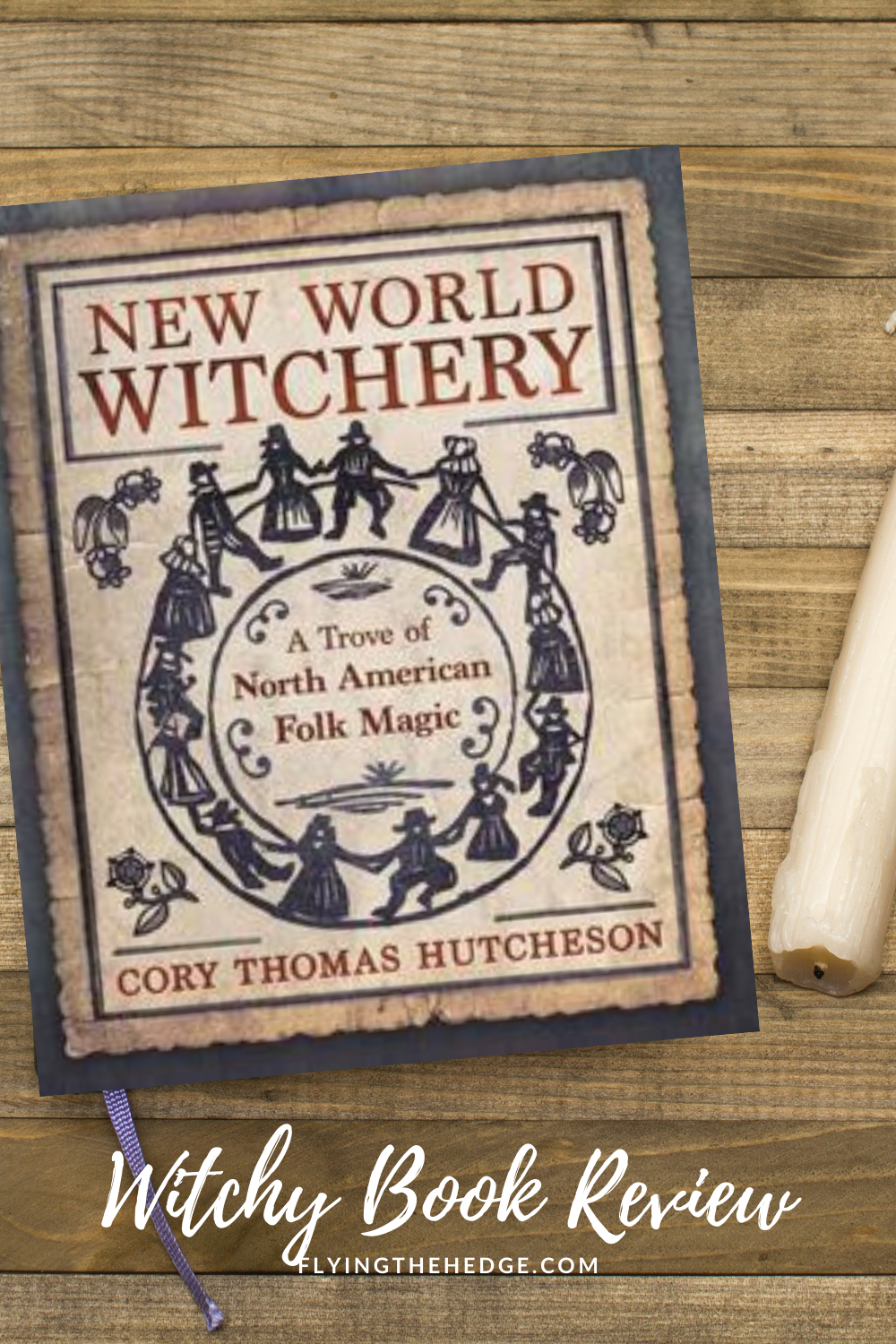Disclosure: Some of the links below are affiliate links, meaning, at no additional cost to you, I will earn a commission if you click through and make a purchase. I received a free copy of this book in exchange for an honest review.
Earlier this week I finished yet another book. I have been a powerhouse lately when it comes to reading books. I have no doubt I will easily reach my goal of 24 books by the end of the year. We are nearing the end of April and I've already read 8 books. I know for some that is just a drop in the bucket, but for me, that is quite a lot for this early! Most of my reading is done during my offtime in the summer. Hopefully, I get to read some fiction books at the beach this summer, but until then I am plowing my way through a number of witchy and occult books hitting the market this year. My latest read was Becoming an Empowered Empath: How to Clear Energy, Set Boundaries, and Embody Your Intuition by Wendy De Rosa.
I'd like to begin this review by stating that De Rosa is a white, Italian Catholic woman married to a Puerto Rican man. This is important because it sets the tone for the book and made me acutely aware of some of the cultural appropriation within its pages. That isn't to say the book is bad or that you shouldn't read it, but it's important to keep this in mind while reading. I normally like to start off with what I enjoyed about a book, but this time I want to start off with what I didn't like because it was such a prominent feature of the book. De Rosa uses the Hindu chakra system as the way to "clear energy, set boundaries, and embody your intuition." This did not sit well with me, and I know that it will not sit well with many of you. Chakras belong to Hinduism and are therefore part of a closed practice. I know many a witch and occult practitioner that uses them, but I do not and I never will. Chakras do not belong to me or my culture, and I have not been initiated into Hinduism. She also hints at karma a couple of times, another Hindu belief. Despite the cultural appropriation, I pressed on with reading the book, knowing she had valuable insight to offer. I was not disappointed.
If you can move past the chakra talk and modify the work being done to better suit your cultural background, the information De Rosa provides is excellent. Most witches tend to be more open to the energies around them, which can lead to fatigue, depression, anxiety, and displaced emotions if you don't carefully protect your own energy. De Rosa, through the use of energy (chakras) and guided meditations, provides the foundation one needs to heal past traumas, recognize energy transfer, and remove unwanted energy. Each chapter ends with journaling work and a guided meditation. The journal prompts are designed to get you digging deeper into the root cause of your unbalanced energy; in a nutshell, these journal prompts resemble a lot of what people do during shadow work, so if you are looking at engaging in some shadow work while simultaneously protecting your own energy, I highly recommend reading through her prompts and taking them seriously. For the purpose of this review, I glossed over most of the questions, but a few stopped me in my tracks, especially those about past traumas and ancestral wounds. I've mentioned before that I have two wonderful, supportive parents, but we financially struggled. There were times when we went without. Ancestrally, both sides of my family have struggled financially, which has resulted in people hoarding money and belongings. While I don't hoard objects, I do have an unusual attachment to the objects I own and great anxiety over money. Many of the journaling prompts put forth by De Rosa helped be deconstruct some of these issues, which eased my financial anxiety greatly. It even allowed me to add some items to the donate pile in my basement. Like I said, I may not agree with the use of chakras, but her method is sound.
Each of the guided meditations at the end of each chapter is beautiful and well designed. A link is even provided (Link here) to find recordings of these guided meditations, all of which are completely free! Of course, you are always welcome to read and record them yourselves, but if you are lazy like me, having them freely available is a huge plus! This is unheard of for most books, and De Rosa and her published should be applauded for providing free book resources. De Rosa clearly takes her work seriously and truly wishes to help others heal.
However, my favorite part of the book was De Rosa's discussion of her own white privilege, her work over the last year (2020) to recognize this privilege, and how she has made changes. She uses her own experiences to encourage her readers to do the same, and at the end of the book, makes it very clear that empaths play an important role in changing the future into a more equitable one. She also addresses the pandemic, and how worldwide traumas manifest energetically, which I appreciated. It's okay to be overwhelmed. It's okay to be anxious. It's okay to be fatigued. These are normal responses, and ones that we can gain control of with the right work. De Rosa argues against using the word "blocked" in regards to your energy because "it assumes that the block can be moved and the energy will start flowing. Instead, traumatic imprints are doorways to the process of healing, releasing, and finding your power again." This quote really resonated with me. In the occult community, we talk a lot about blockages, when we should be discussing them as doorways. Just because something is standing in your way, does not mean that it has to be moved. Sometimes, you can do the moving.
Becoming an Empowered Empath: How to Clear Energy, Set Boundaries, and Embody Your Intuition by Wendy De Rosa is available now from New World Library. If you are an overwhelmed empath, looking to get a firm grip on your gift, this is the book for you. Again, I encourage you to work around the chakras, but of course, that is entirely up to you.
If you liked this post and would like to support future content, please consider leaving a small tip in the jar.











